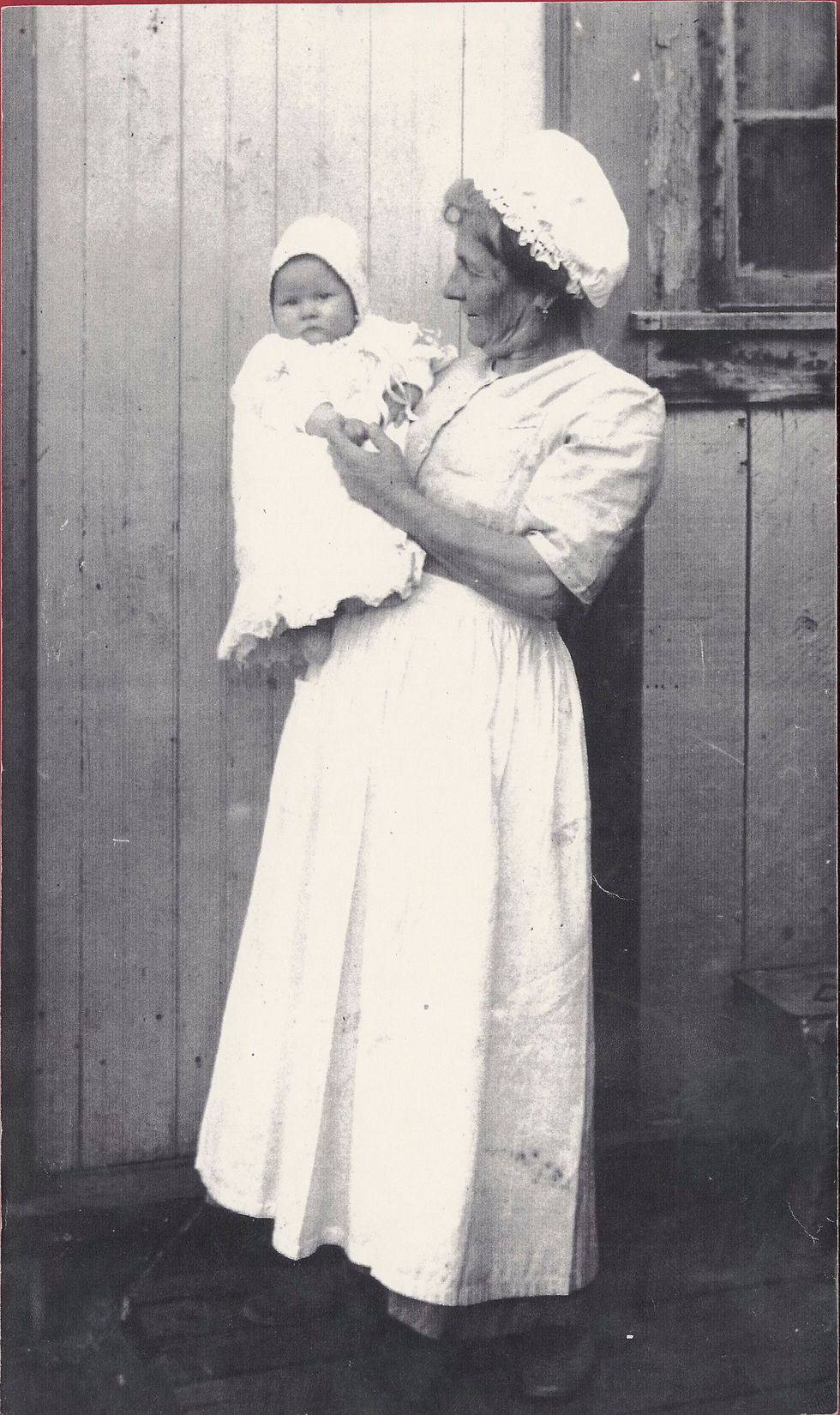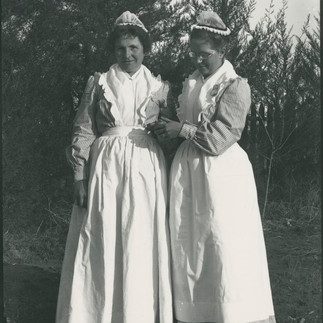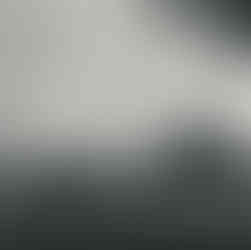Healthcare in the Early Antelope Valley
- Hannah Rogers
- Aug 4, 2021
- 5 min read
Health is essential within any community; without medical practices or people working within medicine, any thriving community would quickly collapse. Medical and healthcare personnel are crucial to maintaining safety, sanitation and overall health within the communities that rely on them. In honor of all the medical workers who have dedicated themselves to their communities throughout the COVID-19 crisis, we’re taking a look at the history of medical practice within Lancaster and the Antelope Valley.

Mentioned in a previous post, Anna “Mom” Evert played a monumental role within the Antelope Valley’s earliest healthcare system and is one of the most influential women in Lancaster’s history. Coming to Lancaster in 1891 with her husband Nick, “Mom” worked at her home as a practical nurse and midwife. On occasion, she even delivered babies with Myrtie Webber at the Western Hotel. Her house and medical office - one in the same - was located on the northeastern corner of Tenth Street (now Lancaster Blvd.) and Beech St. This served as the only hospital in Lancaster from about 1900 until 1921. During this time, her building housed the offices of Dr. James T. Arwine’s medical practice and later Dr. Seth H. Savage.

Dr. Savage worked in minor surgery and medical cases, operating a licensed maternity hospital with x-ray and electrotherapeutic equipment. He succeeded Dr. Arwine as Lancaster’s primary medical doctor. Though Dr. Savage originally had his office at “Mom” Evert’s place, when Evert became ill, Mrs. Savage decided to add onto her home and build a new office for her son. The old Savage hospital was located on the southeast corner of 10th Street (now Lancaster Boulevard) and Cedar Ave., and was originally constructed as a residence for his mother, Mrs. Lucy E. Savage in 1921. At first it was just an office, but eventually the four front rooms of the house were dedicated to patients and functioned as a hospital for the residents of the Antelope Valley. By July 1924, the hospital had expanded again, offering space for 10 patients. It was enlarged further in 1928 and 1930. By 1931, Lancaster finally had a fully equipped, up-to-date hospital.
With so much going on at the hospital, Dr. Savage often turned to local women for help. These women assisted with cooking, laundry, infant care, and sometimes even served as midwives. Some of his nurses through the years included Mrs. Maude Alston (1921), Mrs. Effie Dorman (1923), Mrs. Clare Le Dante (1924), and Mrs. Gladys Le Dante (1926). Dr. Savage’s hospital would later become the Lancaster Community Hospital and was taken over by Dr. W. R. Senseman in 1941.

By the time Dr. Senseman took over the Lancaster Community Hospital, he had competition from Dr. C.B. Byrne’s hospital at 315 10th Street (directly east of the Cedar Complex). Dr. Craig B. Byrne (1904-1984), moved to Lancaster in May 1935 and opened his own practice soon after. He delivered babies and performed surgeries in his tiny hospital on Lancaster Blvd. In 1945, Dr. Homer Rowell became an associate of Dr. Byrne. Some of Byrnes' patients were Judy Garland and Florence Lowe “Pancho” Barnes.

The Cedar Avenue Complex was originally built in 1923 and located on the southwest corner of Cedar and Lancaster Blvd., comprising five government buildings to serve as an office building known as the Memorial Hall, a sheriff’s substation, a garage, a jail, and a health center/veterans clinic. During WWII in 1942, Cedar Avenue Complex served as the center for Red Cross wartime food and clothing drives. The clinic, now known as the 606 building, is located next to what was the Byrne Hospital.
Though these small, private clinics served the community well for a time, it quickly became apparent that a larger hospital would be needed to accommodate the swiftly growing population. At the time, the largest hospital in the area had only 11 beds for approximately 25,000 valley residents. The Desert Community Hospital Association was formed in 1949 with the goal of establishing a large, community-owned hospital. It was dedicated on October 1, 1955, located on about 18 acres at the southwestern corner of Avenue J and 15th St. in Lancaster, opening up as an 85-bed facility. Though it has expanded over the years, this was the beginning of the Antelope Valley Hospital that we know today.
In addition to the hospitals set up for residents, Lancaster drew in a number of ailing persons from outside the area seeking better health. The Lancaster area was well known as a healthy region and ideal location for people seeking relief with pulmonary and bronchial problems. The high desert was rich in dry, clean air that people thought would help ease various illnesses, including most notably tuberculosis (TB). Two sanitariums, the Antelope Valley TB Sanitarium and the Krueger Sanitarium provided space for patients to rest and take in the good desert air. Before the establishment of the sanitariums, TB patients hoping the desert air would help them stayed in tents.

The Antelope Valley TB Sanitarium operated in partnership with Dr. Rachmel, who operated out of a small office located west in the J.C. Penny store across from the Western Hotel. Dr. Rachmel would often send patients to the sanitarium to treat respiratory disease. However, his true specialty was in pregnancy and childbirth, even being considered one of the best obstetricians in Southern California. He was also known by locals for his motto: “A little toddy for the body.”

While Lancaster was well known to residents for its quality of medical care, these were not the only doctors and clinics to serve Antelope Valley residents. Doctors throughout the valley set up practices and provided care to the people living nearby. Some of these physicians were:
Dr. Alfred Hjalmar Swan, M.D. (1883-1959), who sought to establish a new, modern hospital in Palmdale. Swan, who served as a medical missionary in China, knew the importance of medical access and that building a new hospital in the southside of the valley would save residents from having to make the trip to Lancaster. Unfortunately, he passed away before seeing the hospital completed. Construction began February 8, 1964. This hospital was built at 1212 E. Ave. S. and named in dedication to Dr. Swan.


Dr. Philip James Vogel - graduated from Loma Linda University in 1934, Vogel was responsible for opening the first modern medical clinic in Mojave in 1936. His partner was dentist Dr. Thomas Kindel. Though Vogel eventually left the valley for Pasadena, his work had a lasting impact on the Antelope Valley. Dr. Harold H. Snook, who later established a medical practice in Palmdale, first worked under Vogel.
Acton local, Dr. Grace Shilling made a name for herself as a female doctor around 1907. Though she practiced primarily in Los Angeles, Dr. Shilling had a fondness for Acton, where she grew up. As a way of giving back to her old neighbors, Dr. Shilling made regular visits to her hometown to treat patients.
These skilled professionals carried a passion for medicine that helped transform the Antelope Valley into the thriving area it is today. By treating illness, injury, and ensuring that mothers had a safe place to deliver their babies, these early doctors have left a lasting legacy behind. As we make use of the health services available to us today, we pay respect to the healthcare professionals of the past.







Comments